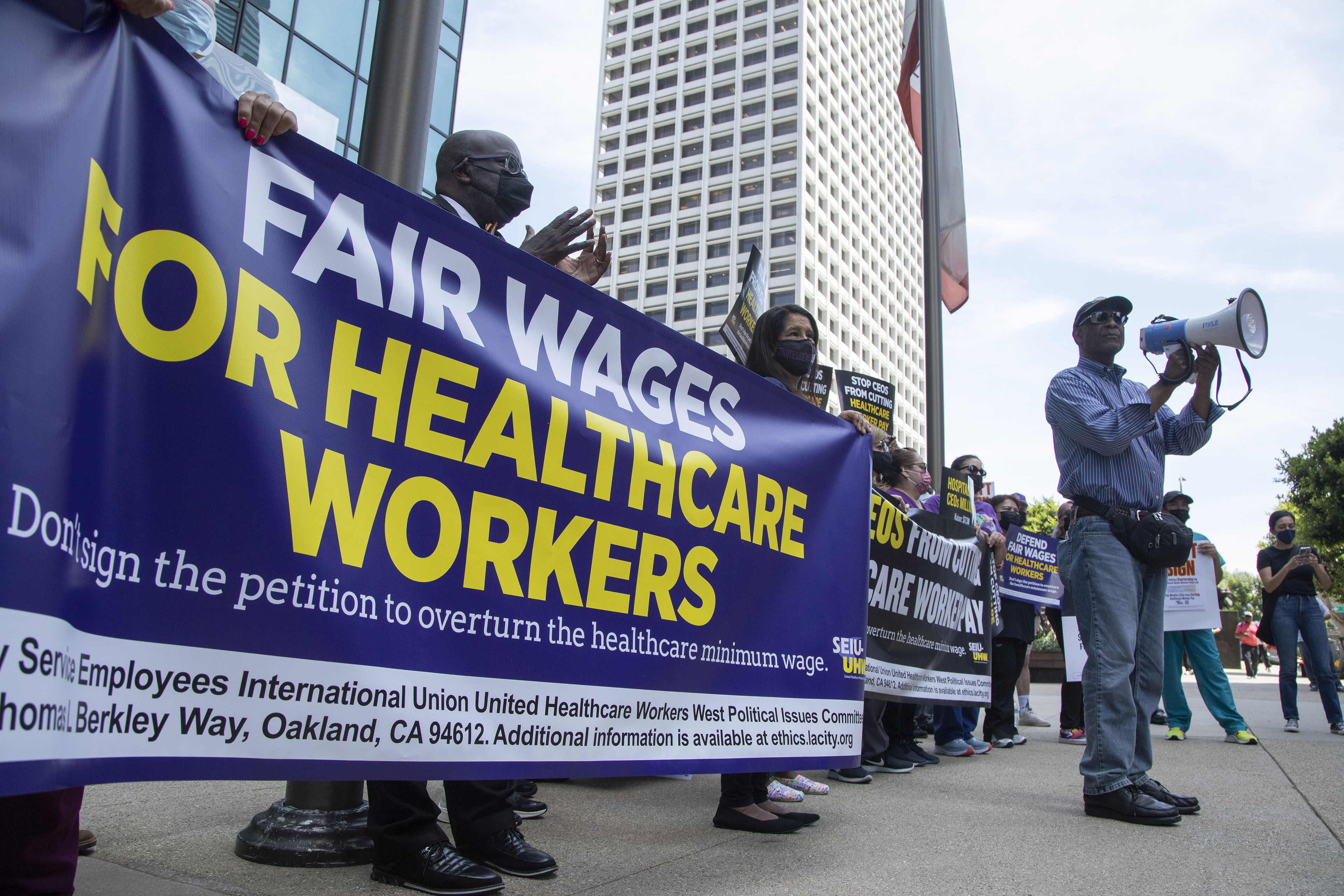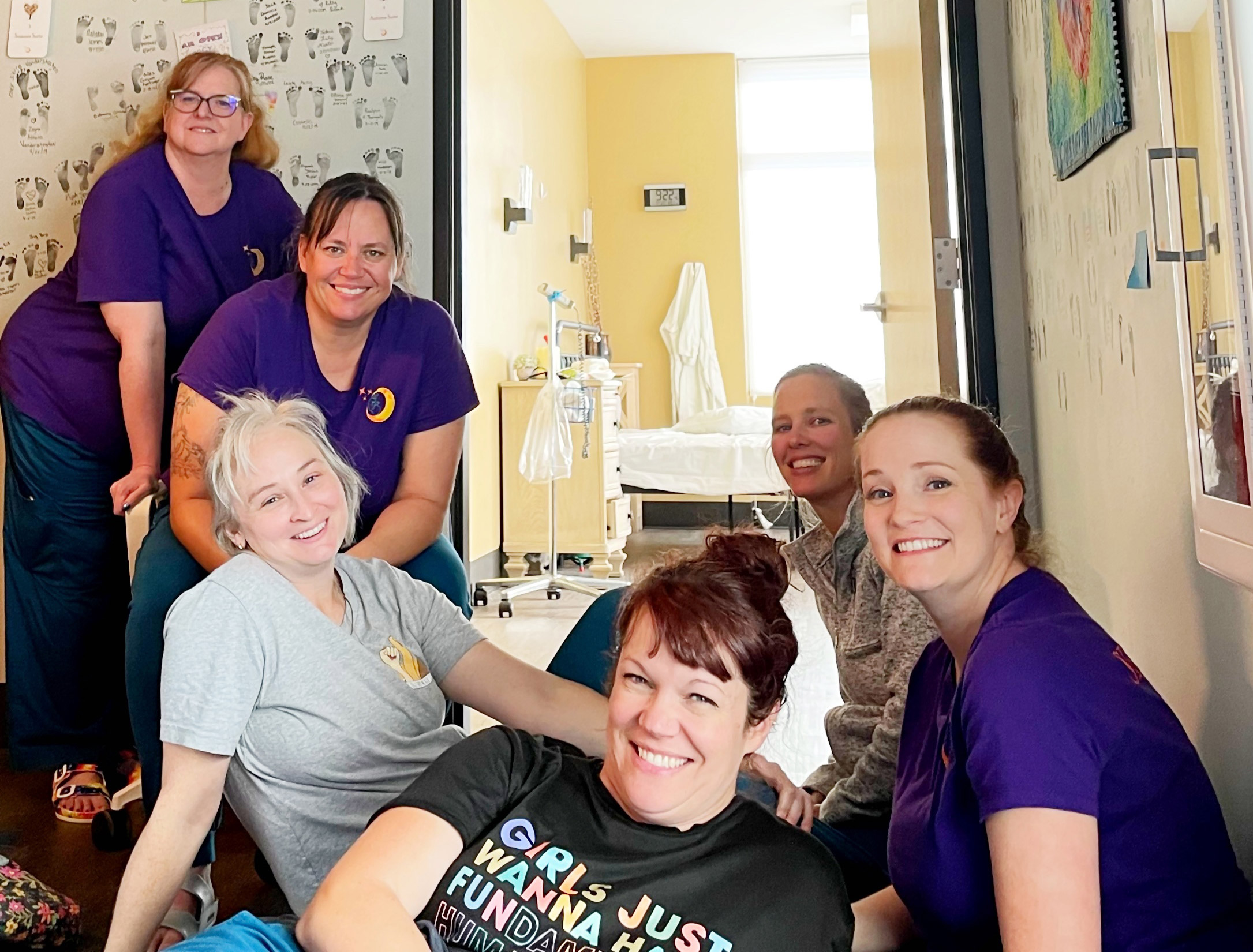Letters to the Editor is a periodic feature. We welcome all comments and will publish a selection. We edit for length and clarity and require full names.
How Physician Assistants and Nurse Practitioners Enhance Health Care
The story of one patient’s ER experience does not at all capture the complexities of an emergency department serving the needs of a stochastic patient population.
Given the reach of KHN, it is disappointing to read stories that inch closer to tabloid-level reporting (“Doctors Are Disappearing From Emergency Rooms as Hospitals Look to Cut Costs,” Feb. 13).
Having spent most of my career working in and operationalizing emergency departments, I can assure you that there are plenty of opportunities to optimize the delivery of care and reduce unnecessary waste and cost while maintaining excellent outcomes. The salient point that you make “it’s all about the money” is too simplistic given the complexities.
Advanced practice providers (APPs) collectively describe nurse practitioners (NPs), physician assistants (PAs), certified registered nurse anesthetists (CRNAs), and certified nurse midwives (CNMs). The term “midlevel practitioner” is outdated.
The archaic paternalistic approach to health care has long been overdue for change. Post-pandemic, it is critical to pivot from “the way it has always been done,” and that includes embracing new models of care.
Physicians and APPs provide excellent care to their patients and operate with different scopes of practice, training, and licensure. Therefore, most of us find working together in team-based models to be highly effective in ensuring that patients see the right care provider for the right health problem.
I found this reporting to be superficial and even offensive to nurse practitioners, like myself, who provide just as high quality care to patients as our physician colleagues.
I welcome the opportunity for dialogue about the value of nurse practitioners and physician assistants.
— Cindi Warburton, Spokane, Washington
— Mark Williams, Sacramento, California
I heard your NPR-partnered story on emergency rooms being managed by private equity and using fewer doctors and more nurse practitioners and physician assistants as midlevel practitioners.
But I prefer midlevel practitioners and medical residents, if their skills are relevant to me. They tend to be more careful in telling me what I should know and in entering records.
The professionally senior doctors (by years of experience and specialty, but I don’t know about board certification) tend to use record-keeping to support higher insurance reimbursement and then they don’t seem to believe what anyone else writes in the records, or don’t bother looking. Furthermore, they’re less likely to tell me what circumstances should prompt me to seek out a doctor or an ER, but if anything goes so wrong or becomes so advanced that I need even more care, they’re happy to provide it.
Doctors often categorically object to nurse practitioners, and state regulations reflect that.
— Nick Levinson, Brooklyn, New York
The recent KHN article “Doctors Are Disappearing From Emergency Rooms as Hospitals Look to Cut Costs” failed to address a critical consideration in the complexities of health care delivery today: the challenge of providing care to patients when they need it at a time when demand for care is on the rise, and the health care workforce is experiencing staggering levels of decline.
Today, 99 million Americans lack adequate access to primary care. By 2026, there will be a shortage of up to 3.2 million health care workers. As a physician associate/physician assistant for more than 20 years, I am kept up at night because of this perfect storm on the horizon — worried for my patients and their ability to access the care they need. Timely access to a trusted and qualified health care provider is never more pressing than during an emergency, when patients are at their most vulnerable, and delay in care can be a matter of life or death.
There is no easy answer to this impending workforce crisis, but one thing is clear: We can meet patient needs only if every member of today’s health care team is respected for the contributions they bring and can practice to the fullest extent of their education and training.
The fact is, without PAs, patients’ access to care would suffer. PAs account for more than 500 million patient visits each year. For many patients, PAs serve as primary care providers. And in some communities, PAs are the only health care providers. Let’s not lose sight of the countless stories we have all read in the media about community hospitals and clinics closing.
This article failed to take into account any research that shows the value and quality of PA-delivered care. For example, a 2021 study published by PLOS ONE looked at 39 studies across North America, Europe, and Africa between 1977 and 2021. In 33 of the 39 studies, researchers found care provided by a PA was comparable or better than care delivered by a physician. In 74% of the studies, resource and labor costs were lower when care was delivered by a PA versus a physician.
The quality of PA-delivered care can also be seen when looking at the ratio of liability claims. The ratio of claims to PAs averaged one claim for every 550 PAs. Compare this to the physician ratio, which averaged 1 claim for every 80 physicians.
Hiring PAs to practice in emergency medicine is not about “replacing” physicians, nor does it diminish the quality of care. Utilizing PAs in emergency medicine is about equipping health care teams with a wide range of highly educated and trained clinicians who can work together to ensure patients get the safe, high-quality care they need.
Let us stay focused on the reason why PAs, nurse practitioners, and physicians went into medicine in the first place: to care for people! Patient-centered, team-based care is about every single one of us contributing our knowledge, experience, and expertise to ensure the best outcomes for patients.
— Jennifer M. Orozco, American Academy of Physician Associates president and board chair, Chicago
— Whitney Schmucker, New York City
KHN should not be using the term “midlevel providers.” It’s a derogatory term used by doctors to belittle advanced practice providers (nurse practitioners and physician associates).
— Danielle Franklin, Minneapolis
— Gregg Gonsalves, New Haven, Connecticut
Nurse practitioners are essential providers in our nation’s current and future health care system. In an effort to highlight concerns related to health facility ownership models, the recent article “Doctors Are Disappearing From Emergency Rooms as Hospitals Look to Cut Costs” incorrectly represents the care provided by NPs in emergency rooms.
In fact, a recent study examining advanced practice providers (APPs), including NPs, in the ER found increasing APP coverage had no impact on flow, safety, or patient experiences in the emergency department. Additional research concluded that after controlling for patient severity and complexity, APPs diagnostic testing and hospitalization rates did not differ from physicians in patients presenting to the emergency department with chest and abdominal pain.
Prepared at the master’s or doctoral level, NPs provide primary, acute, chronic, and specialty care to patients of all ages and backgrounds. NPs practice in nearly every health care setting including hospitals, clinics, Veterans Health Administration and Indian Health Service facilities, emergency rooms, urgent care sites, private physician or NP practices, skilled nursing facilities and nursing facilities, schools, colleges and universities, retail clinics, public health departments, nurse-managed clinics, homeless clinics, and home health care settings. Collectively, NPs deliver high-quality care in more than 1 billion patient visits each year.
Grounded in 50 years of research and evidence-based practice, NPs deliver high-quality care, consistent with their physician counterparts. Results from a study of over 800,000 patients at 530 Veterans Affairs facilities found that patients assigned to NP primary care providers were less likely to utilize additional services, had no difference in costs, and experienced similar chronic disease management compared with physician-assigned patients. Furthermore, a comprehensive summary of studies examining NP quality of care from the American Enterprise Institute underscores the benefits of NP-led care.
Today, NPs represent 355,000 solutions to our nation’s health care needs. Patients deserve access to these high-quality health care providers wherever they seek care.
— April N. Kapu, president of the American Association of Nurse Practitioners, Austin, Texas
— Dr. Sarabeth Broder-Fingert, Boston
Ophthalmologists and Optometrists Aren’t Interchangeable
Increasing Americans’ access to care is critical. However, loosening the scope of practice for certain types of care can be counterproductive and potentially risky for patients (“Montana Considers Allowing Physician Assistants to Practice Independently,” Feb.10).
A small handful of states, for example, have loosened scope-of-practice laws for laser eye surgery, which, if done incorrectly, could lead to serious complications that can damage a person’s vision. Over the course of their medical school education, internships, and residencies, ophthalmologists must complete thousands of hours of training before being allowed to perform laser eye surgeries on their own.
Unfortunately, some states permit optometrists, who are not medical doctors, to perform laser eye surgeries as long as they complete a 16- to 32-hour course. As one might expect, the likelihood of a patient needing additional surgery is significantly higher — more than double — when initial surgeries are performed by an optometrist instead of an ophthalmologist. It is little wonder, then, why states like California have successfully blocked efforts to loosen the scope of practice for laser eye surgery.
Despite the potential risks, and no evidence of documented access issues, the Department of Veterans Affairs updated its community care guidelines last year to allow optometrists in this small number of states to perform laser eye surgery on veterans in community care settings. Worse still, the VA is developing its National Standards of Practice, which many fear would let optometrists in VA facilities nationwide perform laser eye surgery on America’s veterans. To defend our veterans and prevent them from suffering adverse outcomes, it is critical for the VA to maintain patient protections that ensure only medical doctors with the requisite education and training can perform invasive eye surgeries.
Ophthalmologists and optometrists both play important roles in a patient’s collaborative care team, but their duties and skill sets are not interchangeable. Loosening the scope of practice for laser eye surgeries will not serve patients well. Our veterans defended us; now the VA must protect them.
— Dr. Daniel J. Briceland, president of the American Academy of Ophthalmology, Sun City West, Arizona
— David Johnson, Chicago
We were disappointed that the article by Keely Larson about Montana’s consideration of a change in physician assistant regulation failed to note that the vast majority of research on the quality of care provided by physician assistants and nurse practitioners demonstrates that they have similar quality of care to physicians when practicing in their area of expertise. There are numerous literature reviews published in peer-reviewed journals on this topic, which should have been noted in the story. The author selected a single working paper that focuses on quality of care in emergency departments in a single health system (the Department of Veterans Affairs) that is not representative of the settings in which most physician assistants and nurse practitioners work. The individual cited, Dr. Yiqun Chen, extrapolated her working paper to the entire profession of physician assistants (who were not included in her study), which is a significant overreach.
We are accustomed to KHN stories being well researched and balanced. This story missed the mark and does not reflect well on the quality KHN aims to achieve.
— Joanne Spetz, Janet Coffman, and Ulrike Muench, the University of California-San Francisco
— Dr. Mehmet Oz, Bryn Athyn, Pennsylvania
At the Crux of Nursing Home Staffing Crunch: Compensation
I doubt it is possible to staff nursing facilities with qualified and caring staff when the compensation is quite poor and the work environment is very challenging (“Wave of Rural Nursing Home Closures Grows Amid Staffing Crunch,” Jan. 25). It is more a system problem than a staffing problem and will not get “fixed” without some serious changes.
— Dr. Jack Page, Durham, North Carolina
— Benjy Renton, Washington, D.C.
Participating in the Mental Illness Stigma
I wonder what is behind the pressure to persuade us to say there is a stigma to mental health issues (“Public Health Agencies Turn to Locals to Extend Reach Into Immigrant Communities,” Feb. 10)? I wonder why we so easily comply?
— Harold A. Maio, retired mental health editor, Fort Myers, Florida
— Andrzej Klimczuk, Bialystok, Poland
Remote Fitness Must Not Replace the Value of Physical Therapy
If we’ve learned anything in recent years, it’s how vital technology is in allowing us to stay connected virtually, especially when it comes to health care. However, the online world cannot safely and adequately replace everything.
The recent article “Rural Seniors Benefit From Pandemic-Driven Remote Fitness Boom” (Jan.17) details how many older Americans living in rural areas rely on virtual fitness classes to remain physically active. While this is an important and effective option for some seniors, remote fitness classes cannot and should not replace clinically directed physical therapy.
Physical therapy helps patients remain strong and independent by managing pain, preventing injury, and improving mobility, flexibility, and balance under the supervision of a professionally trained physical therapist. It’s especially important at a time when senior deaths from falls are on the rise. Evidence shows that when seniors underwent an exercise intervention from a trained health care professional, it lowered their risk of a fall by 31%.
Not only is it effective in rehabilitating patients, but it is also an affordable, lower-cost alternative to invasive surgeries and pharmacological treatments, saving our health care system millions. And now, with the emergence of remote therapeutic monitoring, physical therapists can more easily reach patients in rural communities to ensure they are reaching their clinical goals through safe, at-home therapy exercises.
Physical therapists undergo years of education and training to provide the best, safest care for their patients. And while I applaud seniors for embracing online fitness classes and staying active, I also encourage them to recognize when clinically supervised physical therapy is needed to protect their safety and health.
— Nikesh Patel, executive director of the Alliance for Physical Therapy Quality and Innovation (APTQI), Washington, D.C.
— Eric Weinhandl, Victoria, Minnesota
Tallying Bad Pennies
“Did Your Health Plan Rip Off Medicare?” (Jan. 27) was a highly misleading article. On a per-enrollee per-year basis, over- and under-payments amounted to literally pennies. If you must pile on, focus on the few bad apples.
— Jon M. Kingsdale, Boston
— Inger Burnett-Zeigler, Chicago
How Much Did They Know and When Did They Know It?
Great story by Harris Meyer about Prentice and Lurie hospitals (“A Baby Spent 36 Days in an In-Network NICU. Why Did the Hospital Next Door Send a Bill?” Jan. 30). I was practicing as an anesthesiologist in Illinois in 2011 when the bill became law banning out-of-network balance billing for hospital-based docs. Of course we knew about the advent of the law: We had to enter into contracts to be in network, contracts that materially reduced all our doctors’ incomes!
It is impossible for me to believe that a professional operating a billing service in 2020 for Ann & Robert H. Lurie Children’s Hospital of Chicago didn’t know about this 2011 law. I don’t believe them for a moment.
Thanks for the great article.
— Ron Meyer, Wilmette, Illinois
— Regina Phelps, San Francisco
Leaving a Bad Taste in My Mouth
In every article I’ve read about Paxlovid, including yours (“What Older Americans Need to Know About Taking Paxlovid,” Dec. 18), not one mentions the horrible metallic taste these pills have. I was prescribed Paxlovid after contracting covid-19. I’m 71 years old. It’s beyond my reasoning that in this day and age a pharmaceutical manufacturer can’t put a neutral coating on the pills. This awful taste stays with you day and night for the five days of use. I even had a friend who had to stop taking them as she was losing sleep over the horrible taste. My reference to friends is: “It’s like sucking on a wrench.” I’m sure this issue isn’t confined to us seniors, but it would be nice to read some recognition of a problem with this medication.
By the way, my workaround, which definitely helps but is hardly a solution, is to swallow the pills down with a swig of cranberry juice.
— Don Dugan, Brookfield, Wisconsin
— Olav Mitchell Underdal, Irvine, California
Admiration for Abortion Doulas
I admire and respect individuals willing to provide aid and comfort to others who are going through either the traditional birth process or a hard decision to end a pregnancy (“In North Carolina, More People Are Training to Support Patients Through an Abortion,” Jan. 5). Kudos to news groups for increasing awareness of individuals and organizations providing valuable services for their fellow citizens.
— Michael Walker, Black Mountain, North Carolina
— Dr. Darrell Gray II, Owings Mills, Maryland
Thinking Outside the Traditional Medicine Box
Katheryn Houghton missed out on sharing info on traditional methods, especially acupuncture (“Why People Who Experience Severe Nausea During Pregnancy Often Go Untreated,” Jan. 13). Also ginger, as in ginger tea, and peppermint. Peppermint oil (sniffed) or tea. I am an advocate for people with cancer.
— Ann Fonfa, founder of the Annie Appleseed Project, Delray Beach, Florida
— Catherine Arnst, New York City
A Cartoon Blooper?
The “Gender reveal?” political cartoon (Feb. 14) was confusing, unfunny, and inaccurate. How is this “political”? (It isn’t.) What makes gender reveals funny? (They’re not.) Most importantly, such reveals — an anachronistic cultural tradition that should be done away with anyway — are “sex reveals,” not “gender reveals.” (Biology is based on anatomy at birth, while gender is self-determined later in life and is fluid over time.) Even sex reveals are problematic, as they assume two biological sexes. (Some estimates indicate nearly 2% of individuals are born intersex, with their sexual anatomy not fitting into categories of either female or male.)
With anti-trans and anti-drag queen legislation being proposed and codified seemingly daily, now is not the time to poke fun at, nor inaccurately represent, the construct of gender. (It’s never the time.)
— Steff Du Bois, licensed clinical psychologist, Chicago
Keeping Marijuana Candy Away From Children
As an emergency room doctor, I was disappointed by the recent “KHN Health Minute” story trivializing a growing public health risk by suggesting parents “lock up their marijuana gummies” to avoid poisoning their children (“Listen to the Latest ‘KHN Health Minute,’” Feb. 16).
For background on why I, and other doctors, are concerned, I encourage you to read “Marijuana Candy: Poisoning and Lack of Protection for Children.”
— Dr. Roneet Lev, San Diego
— Halee Fischer-Wright, Denver
A Suggestion for Extra-Credit Reading
In response to the recent “What the Health?” podcast episode “As US Bumps Against Debt Ceiling, Medicare Becomes a Bargaining Chip” (Jan. 19), please have Julie Rovner read Stephanie Kelton’s book “The Deficit Myth.” She needs to understand why taxes pay for nothing. I consider Kelton’s book the most important on economics and how government budgets and financing work in the modern world.
— Mark Schaffer, Las Vegas
— Iqbal Atcha, Hanover Park, Illinois
Investing in ‘Practice-Ready’ Nurses to Bolster Workforce
The Connecticut Center for Nursing Workforce Inc. has created a best-practice plan to address these issues (“Senators Say Health Worker Shortages Ripe for Bipartisan Compromise,” Feb. 17). As nursing is the largest health care workforce role and a critical infrastructure within the state, nurses are a significant contributor to the fiscal, physical, and mental health of Connecticut, and a profession that can provide economic stability to its workers and families. Over 10,000 qualified nursing students were denied admission to registered nursing programs in 2021 due to full-time and part-time faculty shortages, lack of student clinical placements, and capacity of capstone experiences in specialty areas.
To produce “practice-ready” nurses, investment needs to be made in increasing the number of nursing faculty lines, both full-time (classroom) and part-time (clinical) experiences, simulation capacity and expertise, operations staff, and transition to practice resources.
Today, this is more challenging than ever, due to the impact of covid-19 on our nursing workforce, the natural attrition of our older nurses, early departure of new nurses causing a severe nursing shortage in the state, and the cost of “travel” nurses that is crippling the budgets of our health care facilities and not sustainable over the long term.
Nursing schools are competing for the same nursing human capital as our practice settings yet offer 30% less compensation for faculty roles as compared to clinical practice roles.
As a solution, it is critical to:
- Engage nursing schools to identify the demand for full-time and part-time faculty lines and staff.
- Develop a nurse faculty marketing campaign for associate, baccalaureate, accelerated registered nurse programs, and master’s degree in nursing programs for both full-time and part-time roles.
- Capitalize on the expertise of clinical nurses for the role of part-time clinical nurse faculty.
- Engage health care facilities to determine current nurse vacancies, future staffing needs, and onboarding/“transition to practice” gaps to best inform educational institutions as to the programs needed to be continued, expanded, or dissolved; thereby, maximizing education capacity, resources, faculty, and staff.
— Marcia Proto, executive director for the Connecticut Center for Nursing Workforce Inc., North Haven, Connecticut
— RJ Connelly III, Pawtucket, Rhode Island
Missing Pieces in the Covid Data Puzzle
It is misinformation to state that covid-19 deaths were counted when the opposite was true, and deaths were underreported due to political reasons, and reasons of expediency (“FDA Experts Are Still Puzzled Over Who Should Get Which Covid Shots and When,”) Jan. 27. For example, my father-in-law tested positive for covid before entering the hospital, and then repeatedly tested positive for covid while in the hospital so that he could not be released, and he died in the hospital, and covid was not listed as a cause of death on his death certificate. I have reason to believe that my own father died of covid in May 2020, during an election year, and covid was not listed as a cause of death on his death certificate. These men were not merely statistics, but left behind families who are still in turmoil and grief.
In public, people should wear masks all the time regardless of vaccination status, but, at the same time, be updated on vaccinations and boosters, and, at the same time, socially distance, and, at the same time, wash hands frequently and thoroughly. While all these measures should be taken simultaneously, everyone wearing masks is the easiest way to monitor compliance, and eliminates problems in determining someone else’s vaccination status, or determining whether the efficacy of their vaccines may have waned, or in determining whether they tested positive for covid, and failed to quarantine.
When, previously, the science was that vaccines and booster efficacy waned after three to six months, it should not be touted now to get the vaccine or booster only once a year.
The goal post should never have been moved to merely keeping people out of the hospital, but the goal should be to prevent people contracting covid, and to eradicate this scourge once and for all.
— Edward H. Bonacci Jr., Apex, North Carolina








